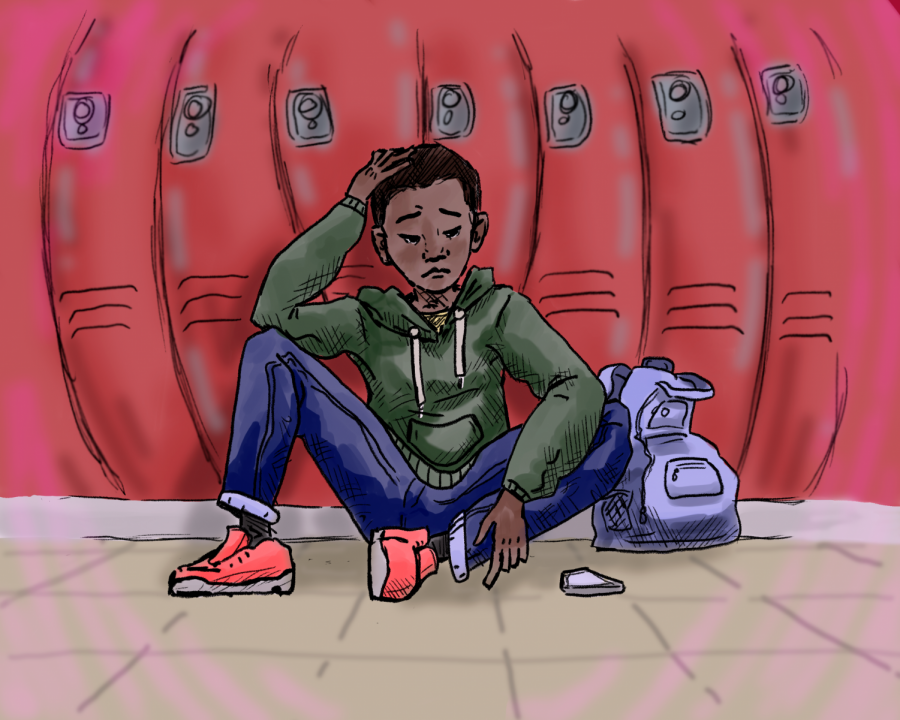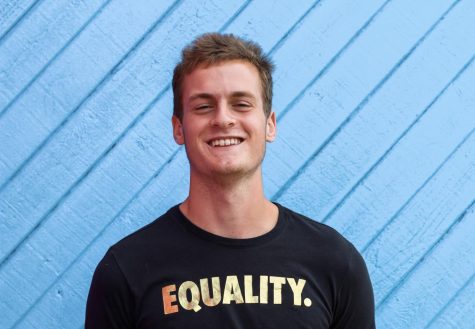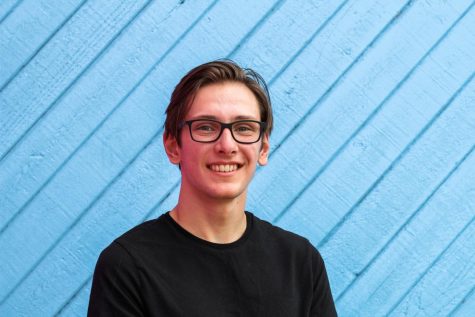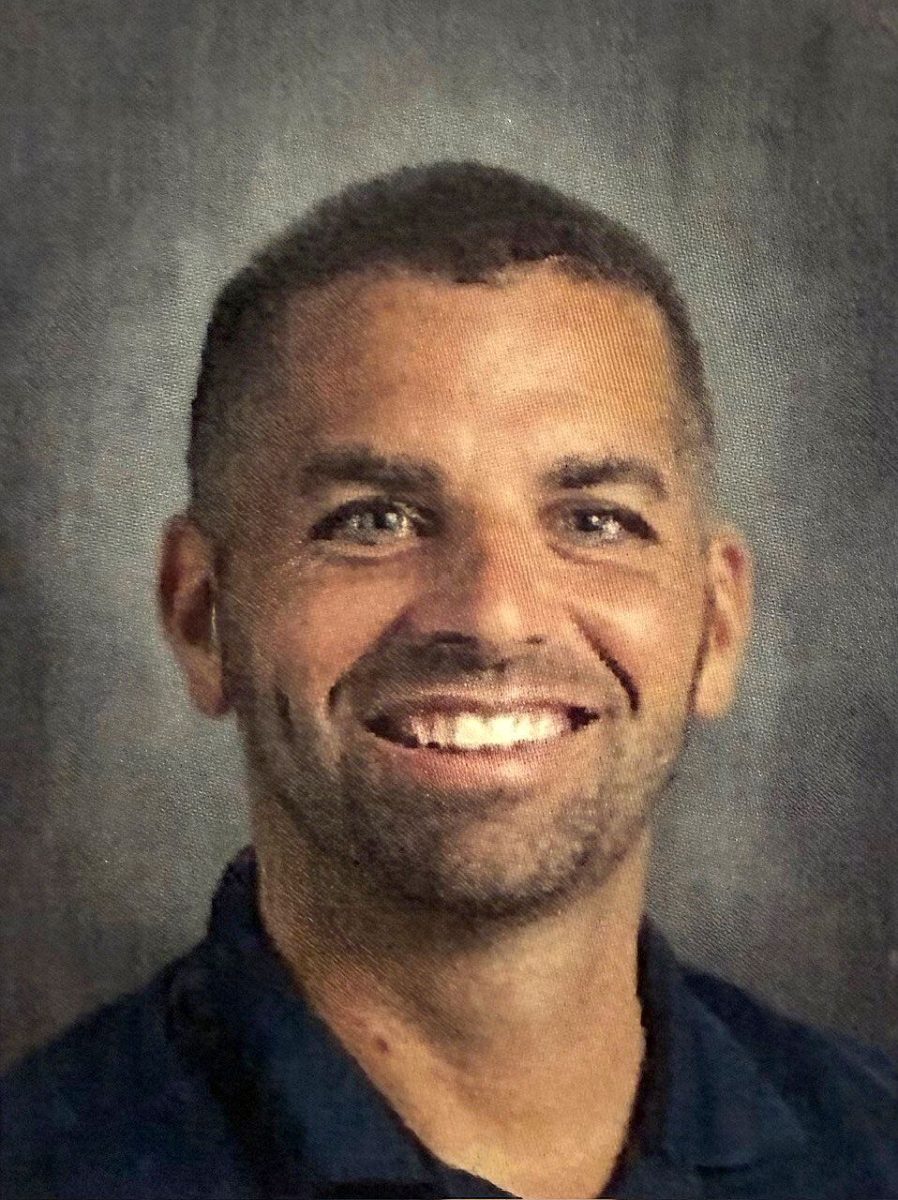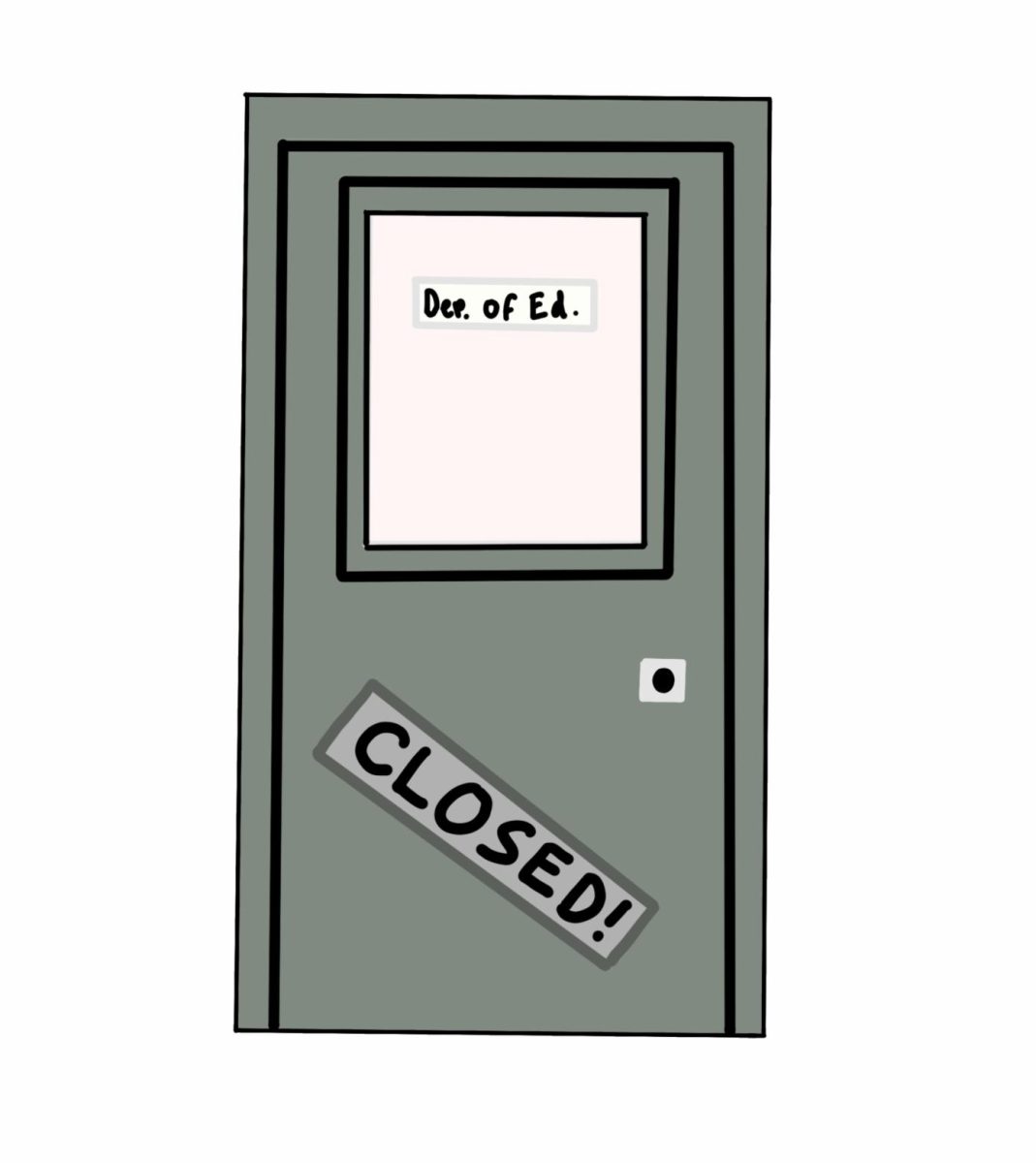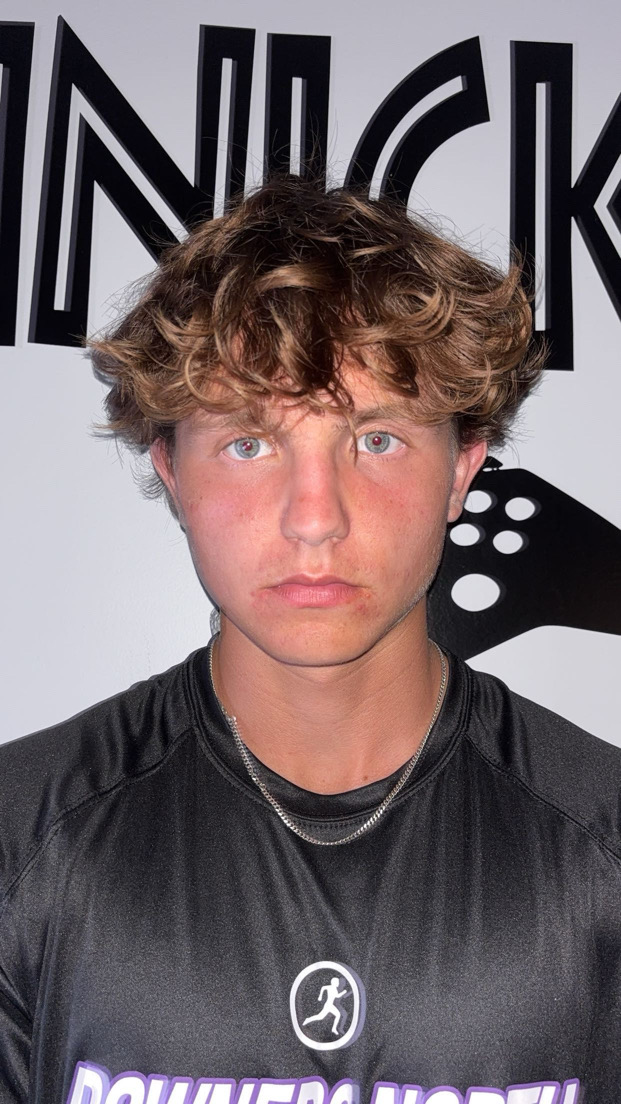‘…Overall, it’s fatiguing’: Minority students, teachers open up about constant struggle against discrimination
IN THE MINORITY: students and teachers in ethnic minorities often struggle with instances of discrimination, racism, and marginalization.
December 17, 2020
When he read Principal Janice Schwarze’s Nov. 18 email informing the student body of “violent and racist” social media posts involving DGN students, PE chairperson and Black Student Union co-sponsor Courtney White was far from surprised.
“I wasn’t surprised, I wasn’t shocked, but it still hurt… It was a matter of time before something happened again,” White, one of DGN’s five Black teachers, said.
Racism, discrimination, and marginalization have been long-standing issues at DGN; several reported, and far more unreported, incidents have occurred in the last several years—the most recent of which is the subject of Schwarze’s aforementioned email. While racist incidents and their subsequent condemnation by the administration shed momentary light on these issues, confronting marginalization is a continuous battle for students and teachers of color at DGN.
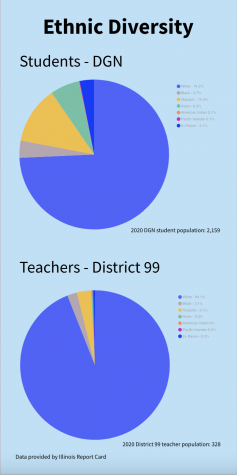
*NOTE* teacher data is for District 99 as a whole; student data is for DGN only. (Graphic by Sam Bull)
According to the Illinois Report Card, 74.3% of DGN’s 2,159 students, as well as 94.1% of the district’s teachers, are white. For students, the second-highest ethnic group at DGN is Hispanic (12.4% of the student population), followed by Asian (6.3%), Black (3.7%), two or more races (3.1%), Pacific Islander (0.1%), and American Indian (0.1%).
For junior Quentin Mills, instances of stereotyping and marginalization are difficult burdens on top of that initial discomfort of being part of the Black minority that makes up only 3.7% of the school.
“In most of my classes, people don’t really look like me; I go somewhere, like clubs, they don’t really look like me—it’s hard to deal with people looking at you that way and saying things to you that way,” Mills said. “You’re in a place where you already don’t feel comfortable if this isn’t what you’re used to, and you already feel like people have preconceptions of you, they’re judging you, and they’ve already had this image of who you are just because of your religion, your skin tone…”
White’s 48 years of experience with this battle has become emotionally exhausting.
“I’m 48 years old. I’ve been around the block a few times, so there are times where I’m able to navigate it and not let it affect me too much. But, I would say, in the end overall, it’s fatiguing. It’s a thing that constantly nicks at you and nicks at you and nicks at you…” White said.
“It’s exasperating, it’s frustrating. Do I address it and then cause more stress and frustration knowing nothing is going to change, or do I let it slide and save myself some sanity?” he added. “Nine times out of 10 I let it slide so I can give myself some sanity and get on to my next meeting or to my next class or continue with my work. It’s those things that people of color, specifically our students of color in the building, are dealing with.”
White is not the only one who has experienced these events. Many students and teachers of color have had more than one experience with racism and marginalization at DGN, from the smallest microaggressions to far more malicious comments.
EXPERIENCES WITH RACISM
Instances such as flippant use of racial slurs or stereotyping and making assumptions based on race (popularly deemed “microaggressions”) occur often—at least for White.
“I hear a lot. I don’t keep a register of how many I see, but it’s a lot—to a point where there are times where it’s uncomfortable to work in the building…” White said. “It’s mostly microaggressions, but those build up and add up. And it’s painful.”
White feels that such occurrences are not unique to DGN. He also said that some instances are magnified more than others and that there are plenty of subtle racist comments or actions that go unreported.
White led a Black Student Union meeting shortly after the most recent racist incident for students to share their feelings and discuss the issue. Mills attended the meeting and described some of the things that were addressed.
“We were all just a little bit confused [at the meeting] because we didn’t really know how to feel about something that we couldn’t see what was happening,” Mills said. “We knew that we wanted a message to come out—we wanted action taken. We don’t like when these things happen and it’s not addressed, it’s not talked about—that is a part of this bigger problem.”
Senior Sara Sheikh, who has ethnic ties to Pakistan and Kenya, had many experiences with similar incidents in her time both at DGN and elsewhere.
“[During my] sophomore year at lunch, a student used to call me a terrorist every day, and then one day he asked me if Osama Bin Laden was my dad,” Sheikh said. “Also, one time at a party, someone came up and threw a sheet on my head. I don’t know if it was meant to be racist but it seemed to be mocking a scarf or something.’”
Sheikh continued, explaining that if she didn’t have thick skin and friends to support her, it would seriously affect her mental health.
“I think that, if it weren’t for my friends, I would definitely be depressed because of it. It just happens so often—every day I would go to lunch and be called a terrorist. That really hurts inside, you know? You think, ‘why would people want to do this?’”
Sheikh explained how, in her eyes, the fact that incidents like this persist despite recent social justice movements across the country shows how racism will never cease to exist as a problem.
“I think it goes to show the community we create sometimes; the fact that we’ve gone through a Black Lives Matter movement so recently yet these things still happen show how a lot of our community has taken it… further proving that you can’t fully get rid of all the harm and the racism in some people’s minds,” Sheikh said.
Special Services teacher and Seeking Educational Equity and Diversity (SEED) member Samiyah Nageeb, who is of Indian and Pakistani ancestry, also recalled an incident with similar spite but explained how she continued to care for and support the students involved despite how disturbing and hurtful it was to her.
“I can think of [at least two students] that wrote a persuasive essay about how Muslims should be… tortured—that we should bring back torture. They were talking about how there were certain segments of the population that were a risk for our well-being as citizens of the United States,” Nageeb said. “So, I gave feedback on that paper, and most of my feedback just went back to: ‘Where are your sources? Cite your sources—have you done your research?’ I continued to care for and support the student despite the sentiments that they were holding towards Muslims because that’s what I do; I’m in this business to care for and support students and help them realize their potential.”
English teacher and Equity and Inclusion Council member Britni Mitchell—another one of DGN’s Black teachers—has had similar occurrences, most often with parents. She recalled specific times when parents would ask her, and only her, about her teaching qualifications.
“During parent-teacher conferences, [parents] have outright asked my qualifications for teaching… I went through a hiring process—a vetting process… Granted, I have no problem talking about [my qualifications], however, after further research, I am the only teacher that those parents ask those questions about,” Mitchell said.
Still, she explained how her life experiences have allowed her to succeed in an environment in which she is a minority.
“[The occurrences] haven’t affected me to the point where I’m uncomfortable, and that’s partly because of my upbringing. My mom is Black, my dad is white; I am accustomed to navigating predominantly white spaces, whether it’s extended family, public schools…” Mitchell said. “I went to Nequa Valley, which is super white. Having that uncomfortable experience that many students have at North early has afforded me the opportunity to find comfort in myself no matter what doors I enter.”
HOW TO IMPROVE
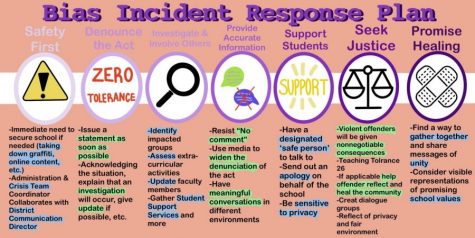
According to MySuburbanLife, DGN has been making strides with regards to equity over the last several years, partly as a response to previous incidents of racism by students. Principal Janice Schwarze explained how past occurrences functioned as learning experiences for the administration to handle this most recent incident of racism.
“Unfortunately this isn’t… the first time this has happened at North. After we had the more public, I would say, incident where people saw a social media post and commented on it and things like that, we needed to be more prepared,” Schwarze said. “In September, we finalized what we call a ‘Bias Incident Response Plan.’ It’s based on Teaching Tolerance, which is a national organization that supports schools in teaching tolerance. So, a lot of [our plan] is what they recommend.”
Schwarze additionally brought up the District 99 Equity and Inclusion Council, of which White, Mitchell, and Nageeb are members. Nageeb explained how the Council is involved in promoting equity within the district as well as helping formulate a response to incidents of marginalization.
“The Equity Council includes members from both North and South that have a stake within the well-being of our respective schools and communities in promoting equity,” Nageeb said. “If and when there is an issue such as the recent one that occurred, we meet and gather and talk about how we can support our students, how we can support our staff members, and how we can heal and grow as a community.”
Schwarze stated how the overarching goal of equity training and teaching at DGN is more to help students understand the significance of racial marginalization than to change the minds of those who are overtly discriminatory.
“For me, it’s about changing the behaviors of those who just don’t know. People who are outwardly and truly racist or homophobic or sexist or whatever it may be—we’re probably not going to change their minds in the years that they’re here at North,” Schwarze said. “But that’s such a small group of people; there are a lot more people who are either just bystanders who wouldn’t speak up because they didn’t want to get involved, or who don’t realize how hurtful something is. That’s where we try to put all of our work in.”
Despite improvements, marginalization persists within the halls of DGN and beyond.
Mills talked about how he feels a change to the curriculum, specifically with English and social studies classes, that further incorporates increased discussion of tough topics like race and discrimination into existing classes would be beneficial for the future.
“A lot of times there’s not productive discussion to give people the chance to process how they feel and then talk with others about what they’re thinking as well because I feel like when you’re talking with other people about it, that’s a good learning experience because you see different perspectives and it gives you a better chance to process everything that’s happening in the world and how you’re feeling,” Mills said. “English classes and social studies classes are great places to do that; we could read modern books that talk about identity, that talk about cultures, that talk about racism and current events.”
Others say that blame should be placed on a broader lack of understanding and empathy for the experiences of others who look differently, which is engrained in the fabric and history of the country. Mitchell expanded on this idea, largely attributing blame to apathy and lack of understanding.
“I do think we live in a world where there is so much apathy; people who are not of minority groups can wake up every day and decide whether they believe the equity of someone else is important or not. If they determine that it is not because it doesn’t change the course of their life, that’s just one more person turning a blind eye to all the things like this that happen,” Mitchell said. “So, I blame silence, I blame apathy, and I blame people who do not step outside of their own reality to try to make the realities of other people better.”
Mills had similar ideas, stating that it is up to everyone to become involved and understand the realities of racism in the community and the country in order to help diminish its effects.
“People need to do more to open their eyes and be more involved in trying to understand how things like racism work, understand how all these institutions in our country and worldwide have serious impacts and implications on a lot of our experiences in the world that we live in today,” Mills said.



